-
How to Choose a Privacy Screen
Choose the Right Privacy Screen Option
An outdoor privacy screen can make your backyard, deck, or patio more private. If you don’t have a privacy fence for your deck or yard, or if your fence or wall is short enough to see over, a privacy screen can make you feel more comfortable. You have a lot of options when it comes to the material, style, design, color, and size of your privacy screen. The options you choose will depend on where you live, building codes and HOA regulations, the size of your outdoor living space, and your personal preferences. Here is your guide to how to choose the right privacy screen option for your deck or patio.
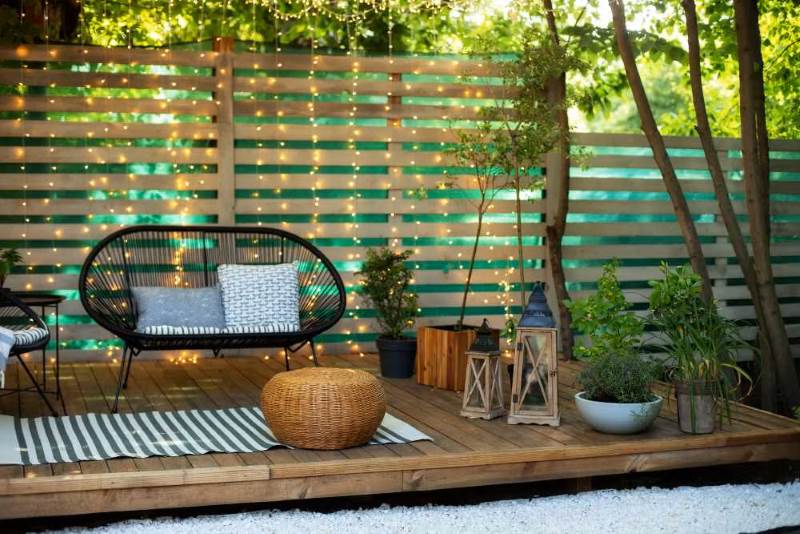
Measure Your Space
Start by measuring your space to determine how big your deck privacy panels need to be. This will help you determine what materials and features you want your screen to have. If you need a large screen, some materials may be outside your budget. In addition to measuring your deck or patio, you should also measure nearby structures that could affect the installation of your privacy screen, such as overhangs, roofs, eaves, rafters, and trees.
Research Building Codes & Regulations
Some cities may impose regulations regarding the size, installation, or placement of privacy fencing or screens. Ensure you are familiar with your local building codes and regulations. You should also find out if you will need to secure a permit to install a privacy screen. Working with an experienced contractor or fence builder can make this process easier.
Evaluate Your Privacy Needs
Next, evaluate your privacy needs. You can choose a full privacy screen, a half screen, or one that can be moved as needed to offer more flexibility. The type of material used will also affect your level of privacy. Lattice-style screens may offer less privacy, especially if you don’t cover them with vines or plants. A solid privacy screen that has opaque panels will offer maximum privacy but will also obscure your view of your yard and will affect how much natural light your deck or patio gets. You can also choose a hybrid option that combines solid panels on the bottom with an open-style or lattice weave top.
Consider Your Patio or Deck Style
The privacy screen you choose should complement the existing style of your deck or patio. Choosing similar materials or colors will make the screen blend in more so that it won’t turn into an eyesore. You should also select a size, style, and design that complements your home’s architecture. Consider how the privacy screen will integrate with your existing outdoor living space to create a seamless, natural extension of that space.
Factor in the Weather & Climate
The weather and climate in your area will play a huge factor in the type of material you choose for your privacy screen. A wood privacy screen is vulnerable to moisture intrusion, rot, sun damage, and pests. A composite privacy screen is made from a combination of wood fibers and plastics, which may make it more durable and weather-resistant. If you live in an area that gets a lot of rain and wind or experiences extreme temperatures, you should choose a material that can handle the wear and tear. Composite and vinyl privacy screens are more resistant to pests and damage and may last longer without as much care and maintenance. Metal and wood privacy screens will need to be treated using a stain or sealant to protect them from pests, moisture, and the weather.
Complement Your Style & Aesthetics
Of course, you should also consider your personal style and aesthetic preferences. Take into account how much time you want to spend cleaning and maintaining the screen as well. If you choose a vinyl privacy screen or a composite material, you may have a range of colors and designs to consider. If you choose natural wood, you can paint or stain the screen to match the color of your deck.
Call to Explore Your Privacy Screen Options
Dick’s Evergreen Fence and Deck offers a range of privacy screen options. We specialize in natural wood, vinyl, and composite privacy screens as well as custom privacy fences for decks and patios. We can help you choose the perfect material and design for your home, and help you enhance the beauty and privacy of your outdoor living space. Our high-quality privacy screens are decorative, durable, and functional and can transform your deck or patio by enhancing your comfort and privacy. Call us now or reach out to us online to explore your privacy screen options in the Portland, OR, area.
-
Eco-Friendly Ways to Clean a White Vinyl Fence
How to Clean a White Vinyl Fence Using Eco-Friendly Methods
Vinyl fencing is highly durable and resistant to pests, rot, and cracks. However, it can become stained or discolored due to exposure to the sun, wind, rain, and dirt. If it is a white vinyl fence, the damage will be even more noticeable. Using harsh chemicals and abrasive cleaning products on your vinyl fence can cause even more damage. Toxic cleaning products can seep into the ground around your fence and contaminate food and water sources. It’s best to use eco-friendly cleaning products when cleaning any type of fence. Here are some tips on how to clean a white vinyl fence using eco-friendly methods.
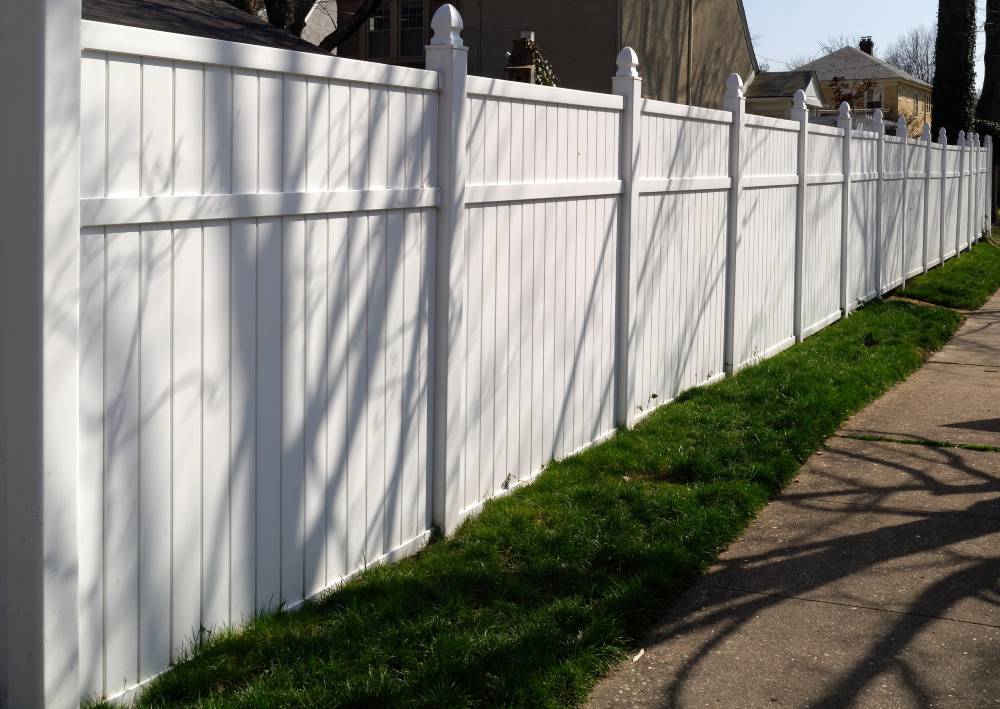
Removing Dirt & Debris Before Cleaning
Before cleaning your fence, remove any dirt and debris. Use a brush or microfiber cloth to gently dust your fence. Try to remove as much dirt, plant parts, and organic matter as possible. You can then use a garden hose to gently spray the fence to remove stubborn dirt and grime. Don’t use a pressure washer on a vinyl fence, as it could cause major damage. While your fence is still damp, you can move on to one of these eco-friendly cleaning methods.
How to Clean a White Vinyl Fence Without a Pressure Washer
Using a high-pressure hose or a pressure washer can damage your vinyl fence. It may cause added wear and tear, significantly shortening your fence’s lifespan. It’s best to use a garden hose to gently spray your fence to remove dirt and debris. You can also use a brush or microfiber cloth and gently rub at spots that have a build-up of grime. A soft-bristled brush or even a toothbrush can get into the grooves and details of your fence to get rid of dirt. Don’t use anything abrasive as that could damage the surface of the fence.
Cleaning a Vinyl Fence With Vinegar & Water
Vinegar and water is a natural cleaning solution that won’t damage your fence or contaminate the soil or water. Mix a solution of equal parts vinegar and warm water in a spray bottle or a bucket. Use a soft cloth or brush to apply the solution to your fence, or spray it on with the spray bottle. You may need to clean some areas more than once if there is mold or mildew on your fence or stubborn stains. After cleaning, use a garden hose to rinse the solution off your fence and let it air dry.
Using Mild Soap & Water to Clean a White Vinyl Fence
Mild soap, such as dish soap, can clean your fence without releasing harsh chemicals or toxins into the soil. You can choose an eco-friendly or green dish soap and mix a teaspoon or two into a spray bottle or bucket of warm water. Use a soft cloth or soft-bristled brush to scrub away dirt, debris, and mold or mildew from your fence. When you’re done, rinse the fence with a garden hose and let it dry in the sun.
Cleaning a White Vinyl Fence With Simple Green
Simple Green is a non-toxic, eco-friendly cleaning solution. You can dilute 1.5 cups of Simple Green in two gallons of warm water. Apply it to your fence using a brush, cloth, or spray bottle. Because it is non-toxic, you don’t need to worry that the runoff will contaminate soil or water. When you’re done cleaning, rinse your fence with a garden hose and let it air dry.
Eco-Friendly Ways to Remove Stains From a White Vinyl Fence
White fences can become stained very easily. However, you should not use bleach on your vinyl fence. You can dampen a Magic Eraser to gently scrub at stains to remove them, and then rinse your fence with a garden hose. You can also make a paste using baking soda and water. Apply it to any stained areas, let it sit for 30 minutes, and then rinse it off with a hose.
Call to Schedule Installation of a Vinyl Fence
Dick’s Evergreen Fence and Deck offers high-quality vinyl fencing installation in the Portland, OR area. We specialize in residential and commercial fencing, and only use the highest quality building materials. Our vinyl fencing is durable, pest-resistant, low-maintenance, and affordable. You can choose from a wide range of colors. Our professional fence installers will make sure your fencing is installed properly so that it lasts as long as possible. Call now or reach out to us online to schedule a consultation and learn more about our vinyl fencing options.
-
How Long Does a Cedar Fence Last?
Cedar fences are constructed from beautiful cedar wood. While cedar is naturally resistant to wood rot, decay, and insects, your fence will still require care and maintenance. Regular cleaning, sealing, staining, and damage repair can help extend the lifespan of your fence. Before you invest in cedar fence installation for your home, you might be wondering how long does a cedar fence last, or how long will an untreated cedar fence last? Keep reading to learn more about the average lifespan of cedar fencing, how to properly care for your cedar fence, and tips for preserving the beauty and longevity of your fence.
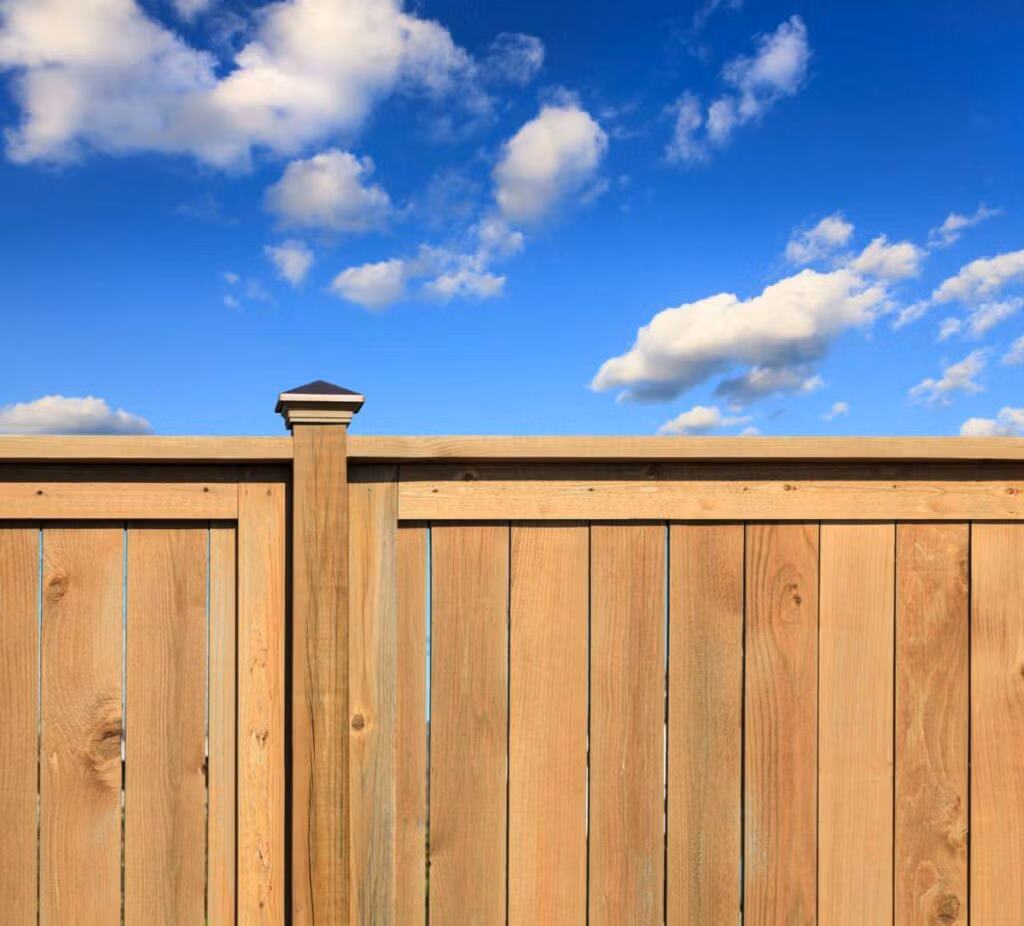
Average Cedar Fence Lifespan
An untreated or unstained cedar fence can last between 15-20 years in mild temperatures and climates. A cedar fence that has been treated with a protective sealant or stain can last 30 years or more. The lifespan of your fence depends on several factors, including the weather and climate in your region, pest activity in the area, the installation method and location, the amount of wear and tear it experiences, and the level of care it receives.
Factors That Affect the Lifespan of Your Cedar Fence
There are many different factors that can shorten or lengthen the lifespan of your fence. Understanding these factors can help you better care for and protect your fencing from damage:
- Wood Quality – One of the biggest factors that influences your fence’s lifespan is the quality of the wood that is used to build it. A high-quality cedar will be more durable and may last longer if it is properly cared for.
- Location and Installation – Whether you hired a professional for fence installation will also affect its lifespan. If it is installed correctly, it can better withstand weather and wear and tear. Its installation location will also play a role. If it is installed near a body of water, an area with thick vegetation, or an area that experiences high traffic or activity from people, animals, or vehicles, it may experience more wear and tear, leading to damage and a shorter lifespan.
- Weather and Climate – The weather and climate in your region can also determine how long your cedar fence lasts. Harsh weather, like heavy rain, snow, hail, and high winds, can cause your fence to deteriorate or get damaged. Extreme heat and cold can also cause the wood to expand and contract regularly, and frequent exposure to moisture can lead to rot, cracks, and warping, especially if your fence is untreated, all of which will shorten its lifespan.
- Wear and Tear – If your fence gets a lot of use, it won’t last as long.
- Pest and Animal Activity – If your fence is installed in an area that sees a lot of animal activity, it is at a greater risk of being damaged. If you have pests in your area that are attracted to cedar wood and your fence is untreated, it could become infested by insects.
- Care and Maintenance – If you don’t properly care for your fence, it will not last as long. Regular care and timely repairs can help your fence last.
How to Properly Care for & Maintain Your Cedar Fence
Even treated or sealed cedar fences require care and maintenance. Here are some tips for keeping your cedar fence clean, protected, and beautiful:
- Regular Cleaning – You should clean your fence after periods of heavy storms, extreme weather, or at the end of each season, depending on the amount of wear and tear it experiences. Brush off dirt and debris with a brush or cloth. Clean the fence with a solution of warm water and mild soap. Do not use harsh chemicals, abrasive cleaners, or rough cleaning tools. Use a hose or soft sprayer to wet the fence and then a brush or cloth to apply the cleaner. Rinse the fence when done, and let it dry completely.
- Sealing and Staining – Your fence should be re-sealed or re-stained every two years, or more often if you live in an area that frequently experiences extreme weather.
- Inspections and Repairs – Regularly inspect your fence for signs of damage, including missing hardware, cracks, split boards, wood rot, loose boards, and other issues. Make repairs right away, as the damage will only get worse over time.
Tips for Protecting Your Cedar Fence From Damage
There are other steps you can take to protect your cedar fence from damage. These measures can preserve the natural beauty of your fence and lessen wear and tear:
- Don’t let sprinklers or other irrigation systems spray your fence directly
- Protect your fence from water and moisture
- Keep plants, trees, shrubs, and other vegetation trimmed so that it doesn’t grow over your fence
- Treat your fence with a sealant or stain to protect it from pests, water, mold and mildew, and rot
- Take care when using mowers, equipment, or vehicles around your fence
- Do not sit on the fence, lean heavy items against it, or hang heavy items from it
Get an Estimate for Cedar Fence Installation
Dick’s Evergreen Fence and Deck specializes in high-quality fence installation. We have more than 40 years of experience in the fencing and decking industry. Our cedar fencing is made from real cedar wood that is durable, beautiful, and strong. We can help you design a custom fence for your home or business and ensure it is installed professionally for maximum durability, protection, and lifespan. Call now or contact us online to schedule a consultation and learn more about cedar fencing installation in the Portland, OR, area.
-
Types of Deck Boards
Exploring Different Types of Decking Boards
Building an outdoor deck can create a comfortable place for barbecuing, relaxing, and enjoying time with friends and family. If you choose your deck materials and style carefully, you can even increase your home’s resale value. It’s important to choose outdoor deck boards that can withstand the weather and climate in your region. Some materials hold up better to extreme heat or cold, rain, hail, wind, and snow. Here is a look at the most common types of decking boards to consider when designing your dream deck.
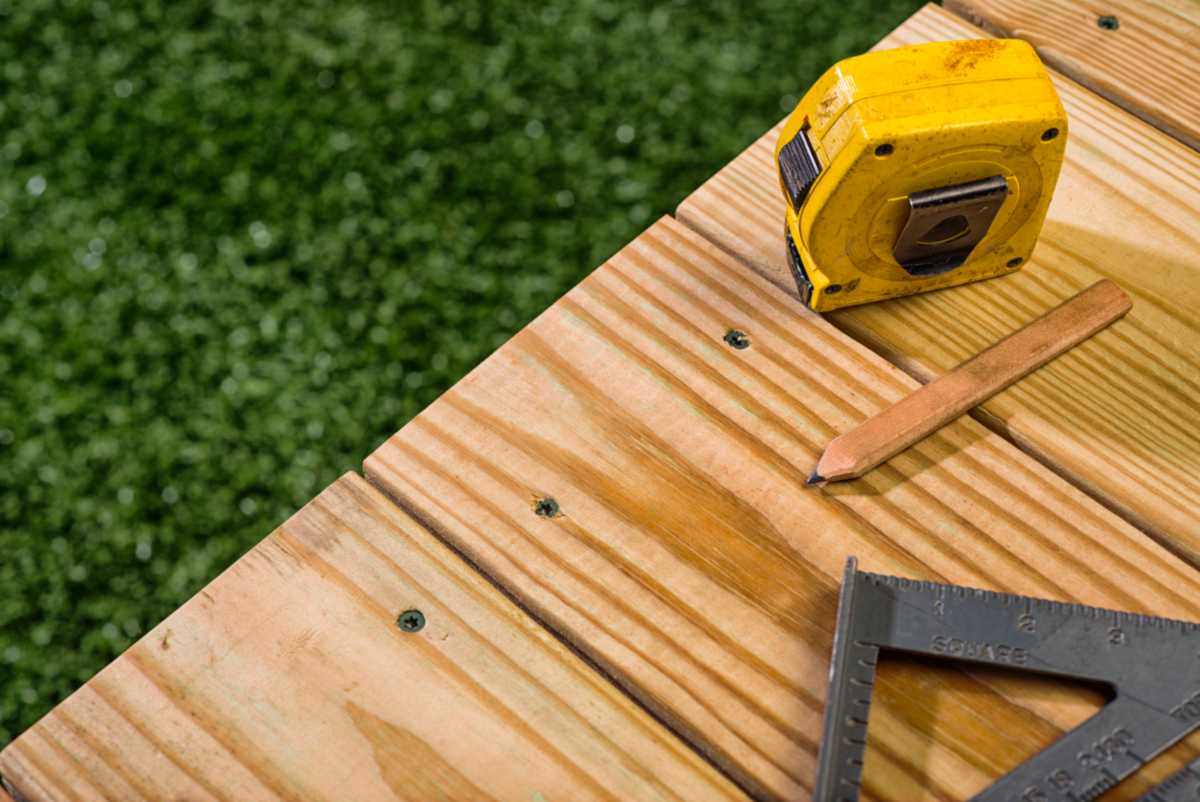
Natural Wood Decking Boards
Natural wood is a traditional and classic option for building an outdoor deck. It is attractive, versatile, and can be easily customized using wood stain or paint. However, you should do your research before choosing a wood species, as some are more vulnerable to insects, rot, and weather damage. The best deck wood types to use in Oregon are:
- Pressure-treated Wood – Pressure-treated wood is affordable, durable, and long-lasting. It has been treated with specialized chemicals that increase its resistance to insects, decay, and rot. It requires more maintenance than other types of wood, however, and isn’t as durable as composite decking or PVC decking.
- Tropical Hardwood – Tropical hardwoods include mahogany, ipe, teak, cumaru, and sapele. These varieties are known for their durability and beauty and can withstand moisture and extreme weather. They are also dense and resistant to insects and decay. They are more expensive than other types of wood, however.
- Cedar – Cedar is a beautiful, durable wood that is naturally resistant to insects, rot, and decay. It is versatile and easy to work with but does require regular maintenance like cleaning, sealing, and staining.
- Redwood – Redwood, like cedar, is more resistant to decay. It is also stronger than other types of wood. It may be more expensive and require more care and maintenance, however.
Composite Deck Boards
Composite decking is a manufactured decking material. It is made from a combination of wood fibers and plastic. It looks like real wood but is more durable, resistant to pests and rot, and requires less care and maintenance. Composite deck boards are available in a wide range of designs that look like natural wood species and grains. Some of the biggest benefits of choosing composite decking materials in Oregon are:
- Longer lifespan and increased resistance to insects, rot, warping, splintering, and cracking
- Can withstand extreme heat and cold, rain, snow, wind, and hail
- Stays smooth and comfortable
- Can last up to 25-50 years with proper care
- Doesn’t require a lot of maintenance and will never need to be stained, sealed, sanded, or painted
- Can be cleaned easily with soap and water
- Highly versatile and aesthetically pleasing, with options for almost every aesthetic
- Eco-friendly and sustainable
- More slip-resistant than some species of wood
- Won’t fade or discolor
PVC or Vinyl Decking
PVC decking is a manufactured deck material that is made from polyvinyl chloride. Vinyl decking is made from a blend of synthetic materials, including PVC and plastic fibers. Both PVC and vinyl deck boards are affordable, low-maintenance, and durable. Both materials can withstand extreme temperatures and are resistant to insects, mold, mildew, and rot. They won’t splinter, discolor, or fade. Both options require occasional cleaning like sweeping or vacuuming, spraying down with a hose, or pressure washing. Vinyl decking is usually more affordable than PVC and doesn’t get as hot underfoot in the summer.
What to Consider When Choosing Your Deck Material
When you work with an experienced contractor to design and build your outdoor deck, they can help you evaluate the pros and cons of different deck materials. Some of the most important factors to consider when you’re choosing your deck board material are:
- Budget – If you’re working with a budget when designing your deck, choose a building material that is both affordable and durable. Choosing the least expensive deck material may end up costing you more over time in maintenance and repairs.
- Climate – The material you choose should be appropriate for the weather and climate in your area. Consider how it will stand up to sun and UV exposure, heat and cold, snow, rain, ice, wind, and hail.
- Maintenance – Think about how much time and money you want to commit to deck maintenance. Natural wood will require regular cleaning, sanding, staining or sealing, and painting.
- Aesthetics – Consider the architecture of your home, the building materials used for your home and other outdoor structures, and your personal taste and preferences. You want your deck to complement the overall aesthetics of your home.
- Durability – Choosing a more durable deck material means your deck will last longer. If you don’t want to have to worry about damage due to weather, insects, and water, choose a composite decking material or vinyl decking.
- Sustainability – If you are committed to sustainability, seek out an eco-friendly deck material. Recycled materials are more eco-friendly, and composite and vinyl decking are more sustainable.
- Future Plans for Your Home – Think about your future plans for your home. If you plan on selling your home in the next 10 years, choose materials that are durable and attractive so that your deck will be a selling point.
Call Now for a Consultation for Deck Installation
Dick’s Evergreen Fence and Deck has been the premier deck builder and contractor in the Portland, OR, area for more than 40 years. We specialize in high-quality deck materials like natural wood, cedar, composite decking, and vinyl decking. We can help you design the deck of your dreams, create the perfect outdoor living space, and add value to your home. We also offer deck railings, deck and patio cover installation, pergolas, fencing, and garden accents. Call now or contact us online to schedule a consultation for your dream deck.
-
Fencing Styles to Match Your Home Aesthetic
Finding a Fencing Style to Match Your Home Aesthetic
Installing a fence around your home can make it safer and more private, and more secure. If you choose a fencing material and style that complements your home’s architecture and aesthetic, it will blend in seamlessly. The wrong fencing style may stick out and look like an eyesore. When you hire a fence installation expert, they can offer guidance in choosing fence details. They can show you pictures of past projects and samples of fencing materials and styles so that it’s easier to envision how your fence will look when it is finished. Here is a helpful guide to finding a fencing style that matches your home aesthetic.
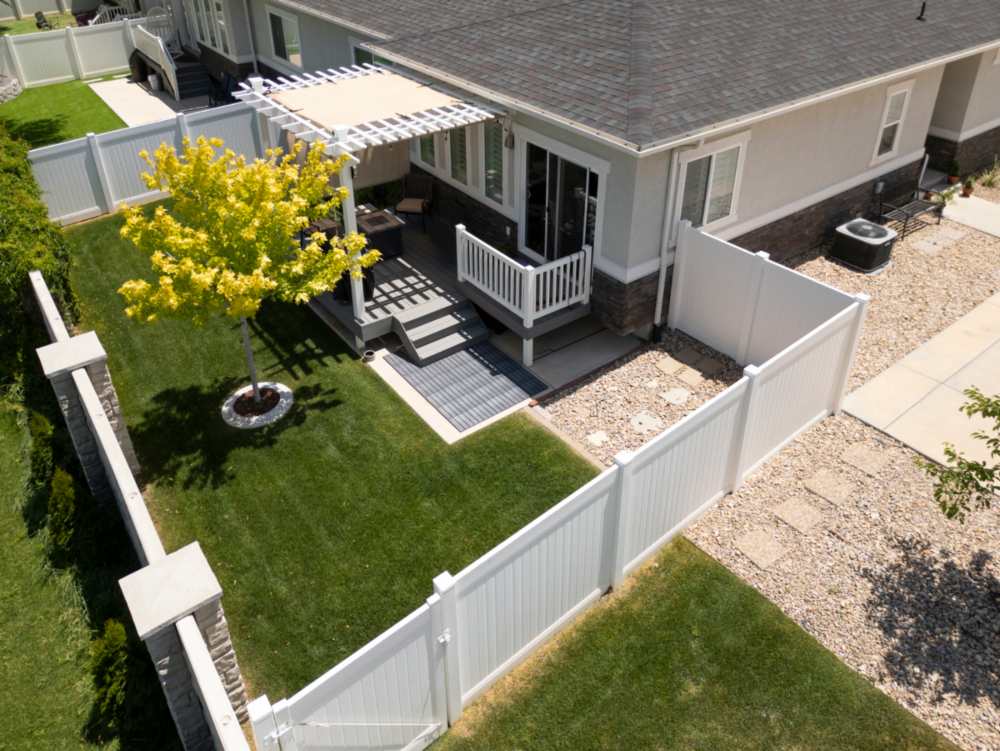
Understand Your Home’s Architectural Style
There are so many different types of fences for homes that it’s easy to get overwhelmed. The best place to start when trying to decide which one is right for you is to consider your home’s architectural style. You want your fence to integrate perfectly with your home’s architecture so that it doesn’t look out of place. Here is a look at the best types of fences for the most common architectural home styles in Oregon:
- Craftsman and Bungalow – Craftsman homes are constructed from natural materials like wood, stone, brick, and metal. They feature overhanging eaves and wide front porches. Bungalows are similar to Craftsman but smaller. The best type of fencing for a Craftsman or Bungalow home is a simple, solid wood fence with rustic features and wide boards.
- Ranch – A Ranch-style home is typically single-story with a simple design and efficient layout. They feature large windows, low-pitch roofs, and open floor plans. The best types of fencing for a Ranch-style home are a split-rail fence, stained wood fence, stone wall, metal fence, or cedar fence.
- Mid-Century Modern – Mid-Century Modern homes are designed with clean lines and minimalist aesthetics. They feature open floor plans, large windows, and a simple, functional design. The best fence for a Mid-Century Modern home is a simple, minimalist design with clean lines made from materials like cedar, wood, vinyl slats, or metal.
- Tudor Revival – A Tudor Revival home usually has a very steeply pitched roof, an arched doorway, and exposed beams. It is made from materials like brick, stone, and timber. The best type of fence for a Tudor Revival is a wood fence with a rustic or traditional style.
- Colonial Revival – A Colonial Revival home features a very symmetrical facade and classical details. It may be constructed from brick, clapboard, stone, or wood. The best type of fencing for a Colonial Revival home is a white picket fence, wrought iron fence, or simple cedar wood fence.
- Cape Cod – A Cape Cod home has a boxy or rectangular shape and a steeply pitched roof. It is symmetrical and centered and usually made from oak, pine, cedar, brick, clapboard, and shakes. The best type of fences for a Cape Cod home are a white picket fence or simple vinyl fencing.
- Victorian – A Victorian home has highly decorative features and ornate details. It is made from brick, stone, or wood. The best type of fences for a Victorian home are wrought iron fencing, metal fencing with ornate details, and SimTek fence that imitates stone.
Consider the Material, Color, and Style of Outdoor Structures
The next thing to consider is the features of other outdoor structures on your property. If your home has a garage, shed, workshop, outdoor living space, deck, or covered porch, you can choose fencing materials that are similar. This will ensure your fence blends in with existing structures and looks like a natural extension of your home. For instance, if you already have a cedar wood deck and pergola, a cedar fence will complement them perfectly. If you have porch and deck railings that are rustic metal, a metal fence will blend right in.
Look at Other Houses on Your Street
You can also look at other houses on your street or in your neighborhood for inspiration. Look at how their fencing materials and styles complement their home. Pay attention to homes that have fences that stand out or don’t look right so that you won’t make the same mistakes.
Choose the Right Material for Your Climate
The material you choose for your fence will affect how long it lasts and how much care and maintenance it needs. If you select a material that can withstand the local weather and climate, your fence will last longer. The most common fencing materials used in Oregon are:
These fencing materials can handle wind, rain, snow, ice, and humidity. They are naturally resistant to insects or can be treated to protect them from insect damage. They are durable and low-maintenance and can complement a variety of architectural styles and aesthetics.
Call Now to Schedule a Consultation for Fence Installation
Dick’s Evergreen Fence and Deck has more than 40 years of experience in fence installation. We can help you explore your options for fence types and styles so that you can choose the perfect one for your home. We offer a wide range of traditional, security, and privacy fence styles. We can show you our portfolio so that you can see examples of the colors, materials, and designs used on homes that are similar to your own. Call us now or contact us online to schedule a consultation for fence installation in the Portland, OR, area.
-
Advantages of Vinyl Fencing Over Wood
Benefits of Vinyl Fencing Over Wood Fences
Both vinyl fences and wood fences can improve the privacy and security of your home, enhance its beauty, and increase its value. When choosing between these two fencing materials, consider your budget, aesthetic preferences, the architecture of your home, and the fencing materials used on other neighboring properties. Keep reading for a guide to the advantages of vinyl vs. wood fence and how to choose the fencing material that’s right for you.
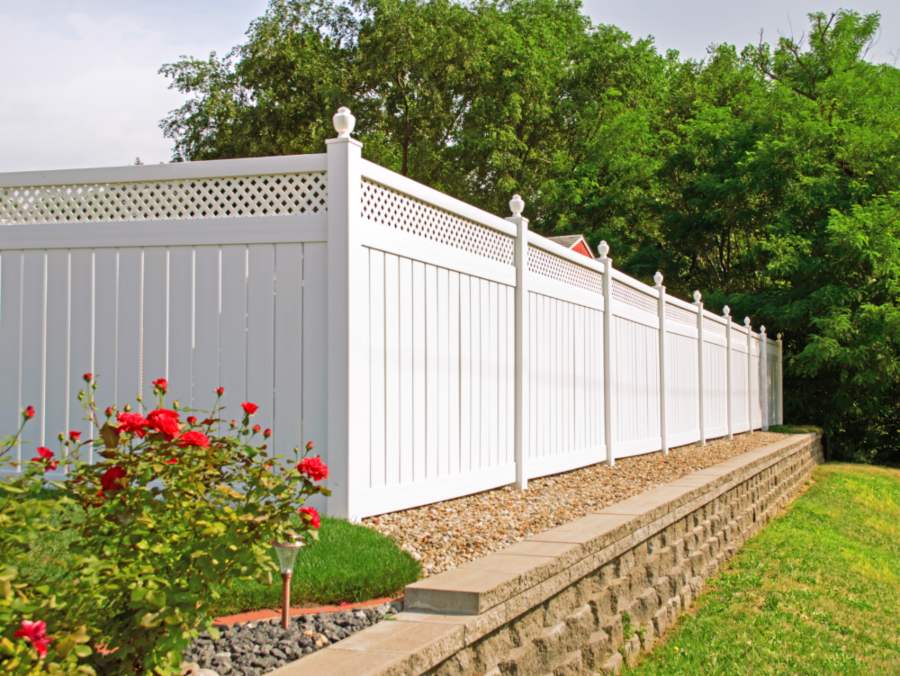
Pros and Cons of Vinyl and Wood Fencing
There are pros and cons to both vinyl and wood fencing. Understanding the advantages and disadvantages of both can help you make a more informed decision:
- Vinyl Fencing – Vinyl is one of the most affordable and durable fencing options available. It is low-maintenance and easy to clean and care for. You won’t need to worry about rot, splinters, insect damage, water damage, or fading and discoloration. It can withstand extreme weather, including sun exposure, heat, cold, wind, snow, and rain. With proper care, it can last for decades. It is also safe, as it doesn’t splinter, rot, or warp. Some vinyl fences are more sustainable and eco-friendly than wood options. However, vinyl fencing is often more expensive and might be less customizable than wood. Because it lasts longer, you won’t need to pay as much for maintenance and repairs, which can offset the initial costs.
- Wood Fencing – Wood fencing is traditional, classic, and aesthetic. It can be easily customized using paint and stains. While it is vulnerable to water, pests, and weather damage, you can protect it by applying sealants or stains. Wood fences are easy to repair but do require more care and maintenance than vinyl. Depending on the wood species you choose, your fence may be more or less expensive than a vinyl fence. Cedar fencing is the most affordable and durable wood fence option.
How to Choose Between a Vinyl or Wood Fence
There are a number of factors to consider before investing in a vinyl or wood fence. A fencing company can give you estimates for both types of fencing and answer any questions you have. Here are some things to think about when choosing between a vinyl or wood fence:
- Cost – When you get an estimate for both types of fencing, you can better determine which one fits your budget.
- Lifespan – Consider the durability and longevity of each fencing material. While one might have a higher upfront cost, it may require a lower investment in maintenance and upkeep. A more expensive fencing material might last longer as well, meaning you won’t have to pay for new fencing for decades.
- Durability – Another factor to consider is how each fencing material can handle the weather and climate in your region. Consider how much rain and humidity your area gets, whether you regularly experience extreme temperatures, and whether your fence will be vulnerable to insect or animal damage.
- Appearance – Aesthetics will also play a huge role in your choice. The fencing material you choose should complement your home’s architecture or your personal taste. It also shouldn’t stand out among the other homes on your street or clash with other exterior materials and structures on your property.
- Maintenance Needs – Finally, consider how much time and money you want to invest in fencing maintenance. If you know you don’t have the time or patience for sanding, staining, sealing, or painting your fence, you may want to choose the most low-maintenance material available.
How Long Do Vinyl Fences Last Compared to Wood?
Certain species of wood, like cedar, can last 20 years or more. However, the lifespan of your wood fence depends on the quality of installation, where it is located, how much wear and tear it gets, and the weather in your area. If you don’t properly care for your wood fence, it also won’t last as long. Vinyl fencing can usually last 30 years or more, with some lasting over 50 years. They don’t require as much maintenance as wood and are typically more durable, especially in extreme temperatures and weather.
Choosing Between a Composite vs. Vinyl Fence
Composite fencing is another good alternative. Composite fences are made from a combination of wood fiber or pulp and recycled plastic. They are highly durable and resistant to weather, impact, pests, fading, and decay. You also have a lot of customization options. They are made to mimic the appearance of natural wood and can look almost identical to certain wood species. Composite fencing may have a higher upfront cost than vinyl fencing, however, and may be more susceptible to fading or discoloration. Composite materials are also more vulnerable to scratches and gouges.
Request an Estimate for Vinyl Fence Installation
Dick’s Evergreen Fence and Deck can give you estimates for wood fencing and vinyl fencing installation. We can go over the pros and cons of each and provide expert guidance to help you make your choice. We specialize in high-quality, durable wood fencing and vinyl fencing and offer expert installation for added longevity and security. Call us now or contact us online to schedule a fencing consultation in the Portland, OR, area.
-
Cedar Fence Ideas for Your Yard
Exploring Popular Cedar Fence Ideas for Your Yard
Cedar is a beautiful natural wood material for fencing. It is durable, attractive, and can complement any architectural design or home aesthetics. It is naturally resistant to decay and insects, and while it does require regular care and maintenance, it can last longer than other wood species. It is also one of the most affordable types of wood to use for fencing. If you’re considering a cedar fence for your home, keep reading to explore popular cedar fence ideas.
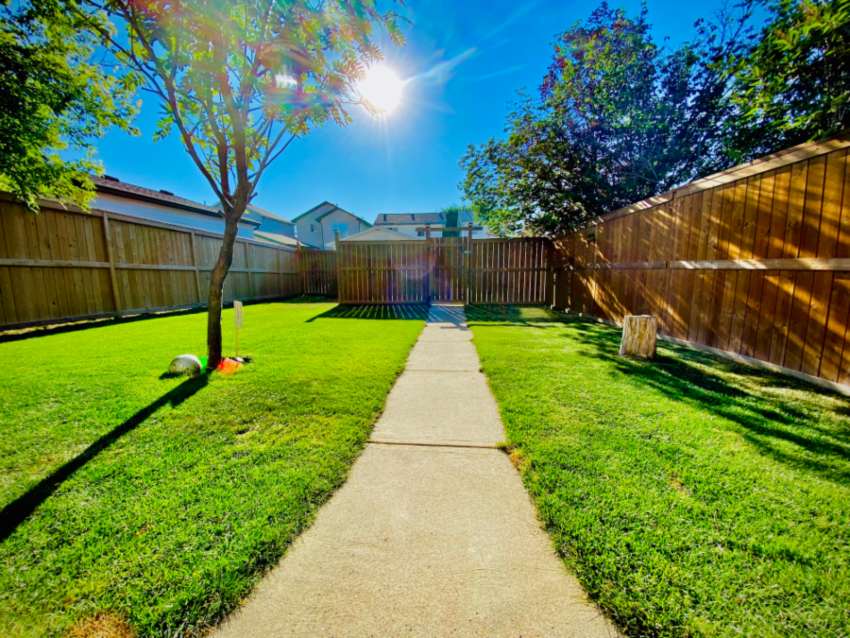
Traditional Picket Fence
Picket fencing is one of the most classic and popular cedar fence styles. It is elegant and timeless and can complement any home’s architectural style. Picket fencing is low and decorative and consists of vertical slats that are attached to horizontal rails and larger, heavier vertical posts that anchor the fence into the ground. The vertical slats may be pointed at the top or have some other decorative element that makes the fence stand out. Picket fences are mostly used to identify property lines rather than enhance the security or privacy of a home. They are easy to climb over, and small children and pets may be able to fit through the slats. However, they don’t obstruct your home’s view.
Cedar Privacy Wall or Fence
A cedar privacy wall or fence can make your home more comfortable and secure. This type of fencing is ideal for people who live in busy urban areas or high-crime neighborhoods who want to block out the sights and sounds so that their outdoor living spaces are more peaceful. Privacy fencing is also much harder to climb over and may deter prowlers or criminals. If you’re concerned about the appearance of your privacy fence, you can add decorative elements that make it look more attractive.
Horizontal Cedar Fence Design
Horizontal cedar fences are constructed from wide horizontal planks connected to thinner upright posts. The posts can also be cedar or can be made from galvanized steel, aluminum, or vinyl. Horizontal fencing is more secure if you have kids or pets and also offers much more privacy than picket fencing. They can also complement any architectural style and are versatile in size, shape, and design.
Split Rail Cedar Fence
A split rail cedar fence is the perfect choice for a Ranch-style home, Craftsman home, or bungalow. It is constructed from rustic, rough-hewn horizontal cedar beams that are attached to thick wood posts. You can make your fencing more secure by adding chicken wire or mesh between the horizontal slats. Split rail fencing is open and doesn’t offer as much privacy and security as a privacy fence or horizontal fencing. It is best used for marking property lines or creating designated areas in your outdoor living space.
Decorative Cedar Fencing
Decorative cedar fences include specialty elements or decorative features. The most popular options are fence toppers like lattice panels, finials or spikes, solid panels, and decorative metal elements. Decorative fencing may also be constructed in a unique design, like arches or decorative panels. It may also include ornate or elaborate post caps or intricate metal work. Decorative fencing can also be practical and utilitarian, depending on its design and construction. It can offer privacy and security and deter prowlers.
Hybrid Cedar Fence
A hybrid cedar fence combines two or more fencing materials and/or design styles. For instance, you might want a horizontal fence with decorative metal work on the top or a split rail fence with mesh barriers between the rails to keep animals contained. A hybrid fence could also combine cedar planks with galvanized steel or pressure-treated wood posts for added visual interest and durability.
Schedule a Consultation for Cedar Fence Installation
If you’re ready to start designing a cedar fence for your home, our team at Dick’s Evergreen Fence and Deck can help. We have more than 40 years of experience in the fencing and decking industry. Our expert installers can help you choose the right fencing material, size, and design for your budget and aesthetic preferences. We specialize in privacy fencing, decorative fencing, picket fencing, and more. Call now or contact us online to schedule a consultation for cedar fence installation in the Portland, OR, area.
-
Chain Link Vs. Wood Fence Cost
Comparing Wood Fence vs. Chain Link Fence Costs
Building a fence doesn’t have to cost a ton of money. There are budget-friendly fencing materials that can still protect your home and privacy. If you’re planning on installing a fence and are wondering, “How much is chain link fence compared to natural wood fencing?”, this helpful guide is for you. Keep reading to compare wood fence vs. chain link fence costs.
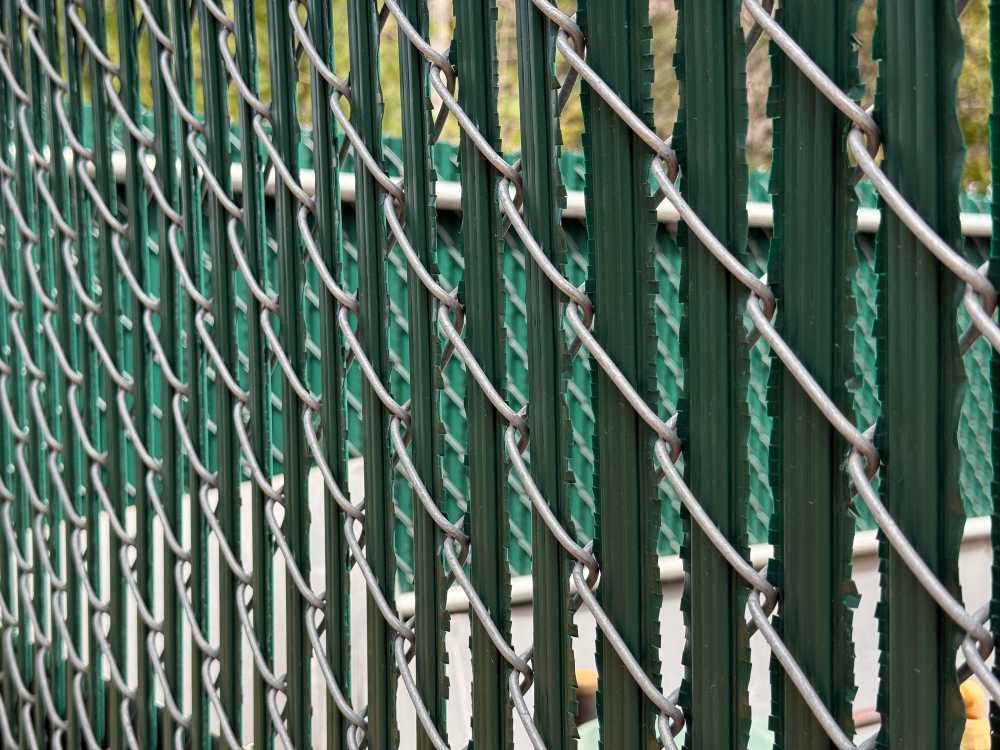
Average Cost of Chain Link Fencing
The average cost range of installing chain link fencing is between $1,200 and $3,500. The best way to find out how much your fence will cost is to contact a local fencing installer. They can measure your property, discuss your needs and budget, and help you find the most affordable solution. Certain features will add more to the cost of your fence, such as specialty chainlink fence panels, security gates, powder coating, and privacy screens. Hiring a professional for installation will also increase the cost but will ensure your fencing is safe, built to last, and installed according to local building codes and regulations.
Average Cost of a Natural Wood Fence
The average cost of installing a natural wood fence can range from $1,900 to $4,800. Your final price will depend on the species and type of wood you choose, as well as the size of the fence, the style and design, and any decorative features or custom elements you add. Call a few fencing companies in your area to get estimates for wood fence installation. They can measure your property and give you estimates based on the size and design of the fence and any special requirements you have. Some features that will cost more are security gates or locking gates, decorative elements like lattice fence toppers, and other materials like steel.
Factors That Affect the Cost of Fencing
There are a lot of different factors that can end up making your fence installation more expensive. Your installer can go over your options with you to help you better understand the cost of each element. The biggest factors that affect the cost of chain link and natural wood fencing are:
- Length and Height – No matter the material you choose, the overall size of your fence will affect its final cost. The length and height of the fence determine your installer’s material and labor needs.
- Material – Different materials also have different costs. The gauge of metal used for a chain link fence, as well as its mesh size and diamond size, can all influence the final cost. The species of wood you choose for a wood fence will also determine your fence’s cost. Some wood varieties, like Western red cedar, white oak, black locust, and tropical hardwoods, are more expensive than others. The least expensive varieties of wood are usually cedar, cypress, pine, and spruce.
- Design – Your fence’s design will affect what materials are needed. If you want specialty features and decorative elements, you may end up paying more. You will also pay more for privacy fencing and super tall fencing, as well as adding security gates, automated gates, and entry points.
- Decorative Elements and Special Features – Decorative elements and special features will cost more. The most common ones that can add to the overall cost of your fence are fence toppers, specialty hardware, decorative posts, gates, metal work, privacy screens, and wind screens.
- Installation, Labor, and Finishing – Installation, labor, and finishing costs will also vary depending on the fence size and materials. Some installers may change more than others, which is why you should get more than one estimate. Installing gates, post caps, privacy slats, and other decorative elements will add to the installation cost.
Preserving the Value of Your Fence
Once you have invested in the cost of a new fence, do everything you can to maintain its value, beauty, and durability. All fencing requires care and maintenance, even low-maintenance options like vinyl fencing and composite wood fencing. Here are some tips for getting the most out of your investment and making sure your fence lasts as long as possible:
- Regularly inspect your fence for signs of damage, insect activity, and wear and tear.
- Inspect your fence after heavy storms or periods of extreme weather.
- Clean your fence regularly by brushing off dirt and debris or spraying it with a hose or soft pressure washer.
- Make fence repairs right away, or the damage will get more extensive and expensive.
- Do not lean heavy objects up against your fence or hang anything heavy from your fence.
- Don’t climb on your fence or sit on it.
- Try to protect your fence from animals and insects.
- Take care when using mowers, equipment, or vehicles near your fence.
- Re-apply protective coatings as needed.
- Keep trees, bushes, shrubs, and other plants trimmed so that they won’t grow over or into your fence.
Request an Estimate for Fence Installation
Dick’s Evergreen Fence and Deck offers high-quality, durable fencing. We can offer you an estimate for the cost of fence materials and installation so that you can make an informed decision about which type of fencing is right for you. We specialize in steel fencing, cedar fencing, vinyl fencing, chain link fencing, and SimTek fencing. Call now or contact us online to request an estimate for fence installation in the Portland, OR, area.
-
Step-by-Step Guide to Sand a Wood Deck
Sanding Wooden Deck Safely
Your wooden deck requires regular care and maintenance. Sanding, staining, and sealing your deck will protect it and preserve its beauty, as well as keep it safe and comfortable to use. If you have noticed splinters, rough boards, or other signs of wear and tear to your deck, it’s time to give it a good sanding. Before you get started, read this step-by-step guide to how to sand a deck to find out the best deck sander to use and the most effective methods for getting your wooden deck smooth again.
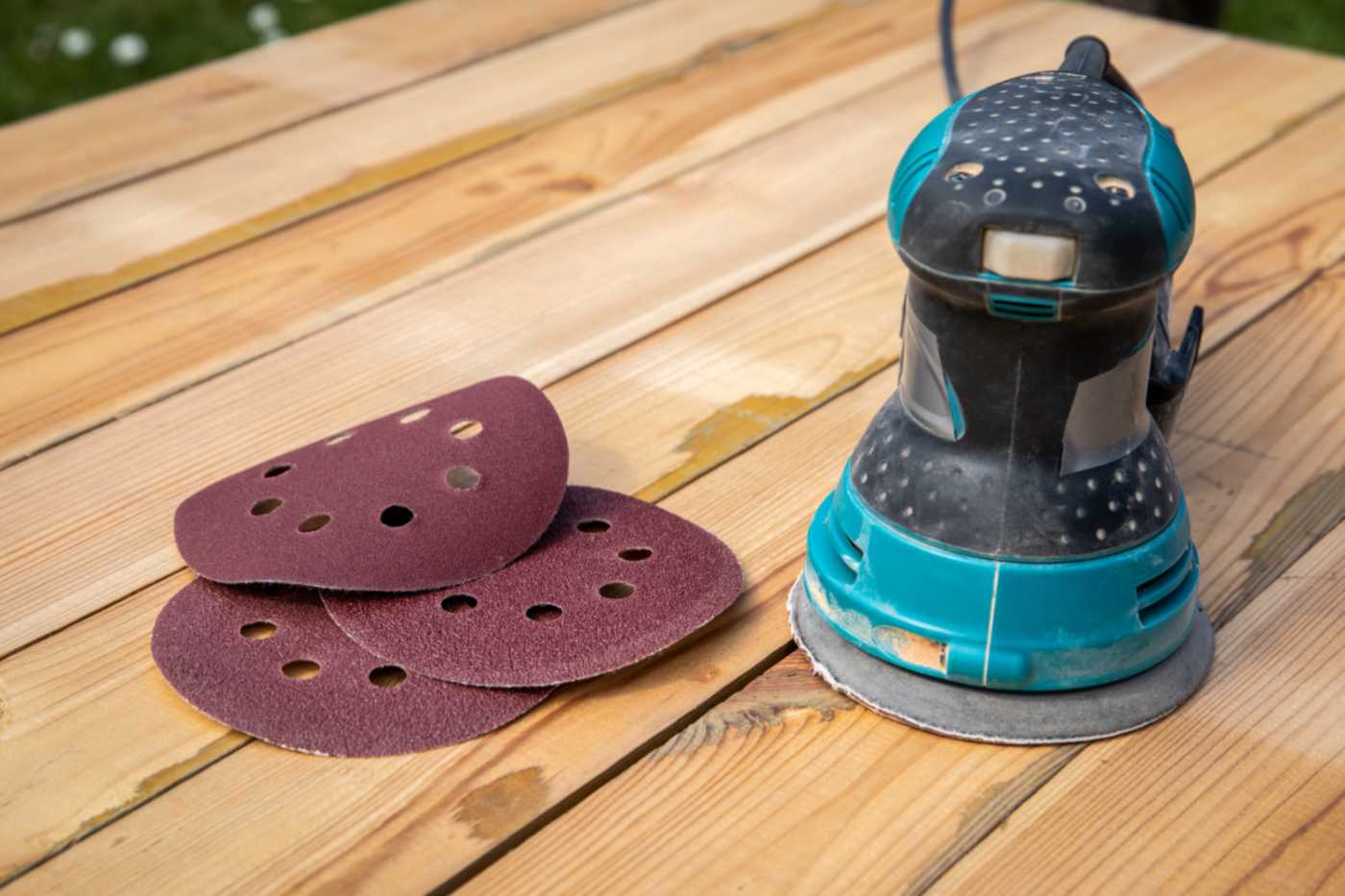
Choose the Right Deck Sander
The first thing you want to do is choose the right type of deck sander for your wood deck species and the size of your deck. If you don’t have a lot of experience using a sander, you may want to ask an expert for advice. You can rent a sander from a local home improvement store or hardware store or buy one. There are a few different deck sander options:
- Belt Sander – A belt sander uses a continuous loop of sandpaper. It is powerful and fast, so it’s ideal for large decks and decks that need a lot of work. A belt sander can easily remove old deck finishes and make rough, uneven surfaces level again.
- Orbital Sander – An orbital sander is designed to move in small circles that overlap. It is best for small projects and is easier to use and control, especially if you’re new to deck refinishing. It also produces less sawdust.
- Random Orbital Sander – A random orbital sander functions like an orbital sander but moves in a random pattern to create a very smooth finish.
- Detail Sander – A detail sander is small and designed for sanding tight or awkward areas, like around corners and posts. It can be used after you use a larger sander.
Select the Right Grit for Sanding a Deck
The sandpaper grit you choose will play a huge role in how smooth your deck gets and how long your project takes. You want to choose a high enough grit that you can tackle rough, old, and damaged areas of your deck but not so high that you end up removing healthy areas of wood. Most projects require a 60 or 80 grit sandpaper, but decks that are damaged or weathered, or have a stubborn coating may require a 40 grit sandpaper. The most commonly used sandpaper grits for deck sanding are:
- 40 grit – A 40 grit sandpaper can be used to remove paint, stain, varnish, and other coatings for your deck. It will work well on decks that are slightly weathered or damaged and that have more than one layer of finish.
- 60 grit – A 60 grit sandpaper can remove splinters and smooth out rough edges.
- 80 grit – An 80 grit sandpaper should be used before you apply stain or sealant to your deck or paint it.
- 100 grit – A 100 grit sandpaper is used for final touches on stubborn areas so that your deck is very smooth and ready to be stained.
Prepare Your Deck for Sanding
Before you begin sanding, you’ll want to clean and prepare your deck. Take all of the furniture and other items off of it. Then remove debris and sweep your deck, or use a leaf blower to get rid of dust and dirt. If your deck is very dirty, you can use a soft power washer or spray it with a garden hose. However, you’ll need to wait for it to dry completely before you begin sanding. If there are any majorly damaged areas on your deck, repair them before sanding. Make sure all screws and nails are fully flush with the deck surface, and replace boards that are too damaged for refinishing.
Use a Careful, Thorough Sanding Process
When sanding, you need to use a careful, thorough process to make sure the deck ends up smooth and even. You can watch online videos that show you how to sand between deck boards and get around corners or tight areas. Always sand in the direction of the wood grain and use consistent pressure. Regularly stop and assess the board for imperfections and to make sure it’s evenly sanded. Switch to a smaller detail sander to go around posts, edges, corners, and railings. When you’re finished doing the entire deck, attach the next finest sandpaper grit for a more thorough finish.
Clean Your Deck Before Staining or Sealing
When you’re done sanding, you’ll need to clean your deck again before you stain, seal, or paint it. Use a vacuum to remove sawdust and debris. Then, wipe your deck clean with a soft brush or microfiber cloth. If you use a hose or soft power washer, let your deck dry thoroughly before finishing it.
Call Now for a Consultation for Deck Installation
Dick’s Evergreen Fence and Deck offers custom deck design and installation. We have more than 40 years of experience in the industry and can help you design your dream deck and outdoor living space. Our deck options include real wood decking, vinyl decking, and composite decking. We also offer add-ons like benches, stairs, deck railings, planter boxes, deck covers, and garden accents. Our experts will build a deck that adds beauty to your home and makes your outdoor living space safe and comfortable to use. Call us now or contact us online to schedule a consultation for an outdoor deck in the Portland, OR, area.
-
How to Maintain a Cedar Fence
How to Maintain a Cedar Fence
Although cedar fences are naturally resistant to insects and decay, your fence still requires regular care and maintenance. Do you need some tips on how to maintain a cedar fence? It’s best to inspect your fence seasonally and after major storms or periods of extreme weather. You should also reseal or re-stain your fence every two to three years or as soon as you notice signs of wear and tear. Properly maintaining your fence can protect its beauty, extend its lifespan, and ensure its stability and durability. Here are some additional tips for proper cedar fence maintenance.
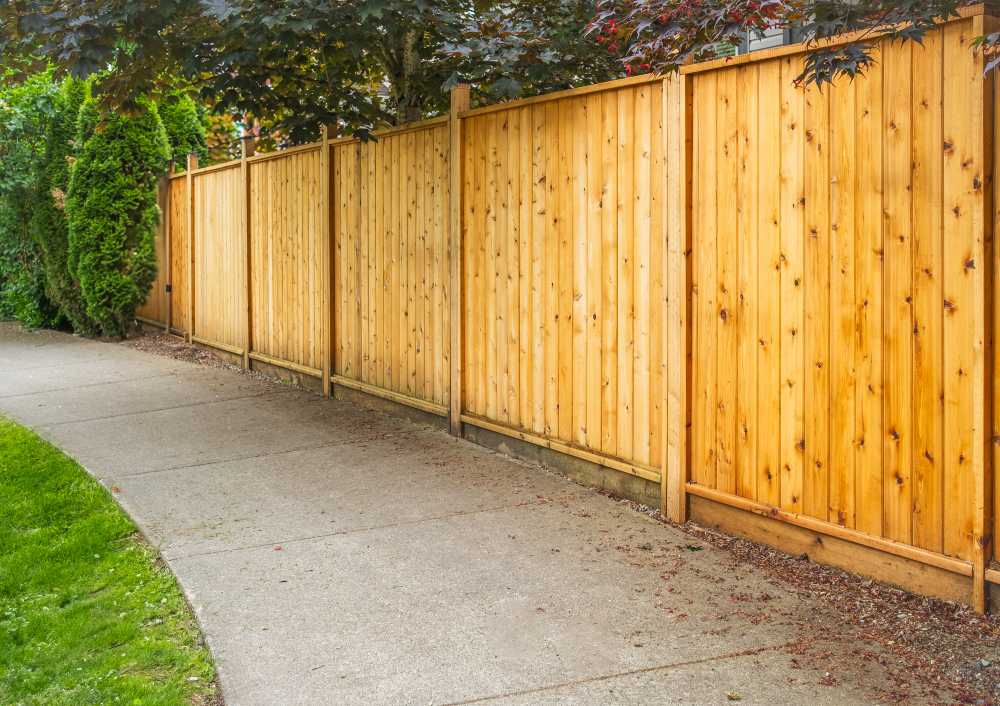
Regularly Inspect Your Fence for Signs of Damage
One of the most important parts of cedar fence care is to regularly inspect it. If you catch early warning signs of problems, you can treat them sooner and reduce the risk of major damage. You should inspect your fence seasonally, in the summer, spring, winter, and fall. You should also check it after periods of heavy rain, snow, wind, heat, cold, ice, and humidity. Look for warning signs that you need fence repair or that you need to apply fence stain or sealant, including:
- Leaning or sagging
- Loose or missing hardware
- Broken or missing fence boards
- Wood rot
- Moisture beading up on the surface or signs of moisture intrusion
- Discoloration or fading
- Stains
- Peeling paint or stain
- Signs of pests
- Holes
- Splintering wood
- Warped or curled boards
Clean Your Fence Properly
After inspecting your fence, you should clean it thoroughly. Use a soft brush to remove dirt, debris, and organic matter. Do not use a power washer or abrasive cleaning products or tools. Gently wash with a hose to remove stubborn areas of dirt. Only use cedar fence cleaners and cedar fence treatments that are recommended by your fence installer or the manufacturer of your fence. You can usually just use a mild detergent mixed with warm water to remove stains or debris. If you see signs of mold or mildew, use a mixture of bleach and water to get rid of it.
Stain & Seal Your Fence Every Two or Three Years
You will need to reapply fence stain or sealant every two or three years or if you notice signs of damage or wear and tear. A protective stain or sealant can prevent moisture intrusion, water damage, rot, mold, mildew, sun damage, and pest infestations. Choose a high-quality product from a reputable brand. Apply it evenly with a brush or roller.
Protect Your Fence
There are also several steps you can take to protect your cedar fence and extend its lifespan. Do not allow sprinklers, hoses, or irrigation systems to spray water directly on your fence. Do not use vehicles, equipment, or mowers right next to it. Don’t sit on, lean against, or hang anything heavy from the fence. Protect it from animal and insect activity. Regularly trim weeds, trees, bushes, and other plants so that they don’t grow over or into the structure and damage it.
Address Damage Right Away
If you do notice signs of damage to your fence, you should address them right away. Ignoring them will only give them time to get bigger and more expensive to repair. For major damage, it’s best to hire a professional with experience in cedar fence repair or restoration. If one or more boards are seriously damaged, you should replace them rather than trying to repair them.
Call for Cedar Fence Installation
Dick’s Evergreen Fence and Deck offers professional cedar fence installation throughout the Portland, OR, area. We have 40 years of experience in fencing and decking, and can help you choose the right type of fence for your needs. We exclusively use high-quality cedar that is carefully selected for its beauty and exceptional durability. We also offer cedar decks, pergolas, patio covers, and garden accents. Call us now or contact us online to request an estimate for cedar fencing.
